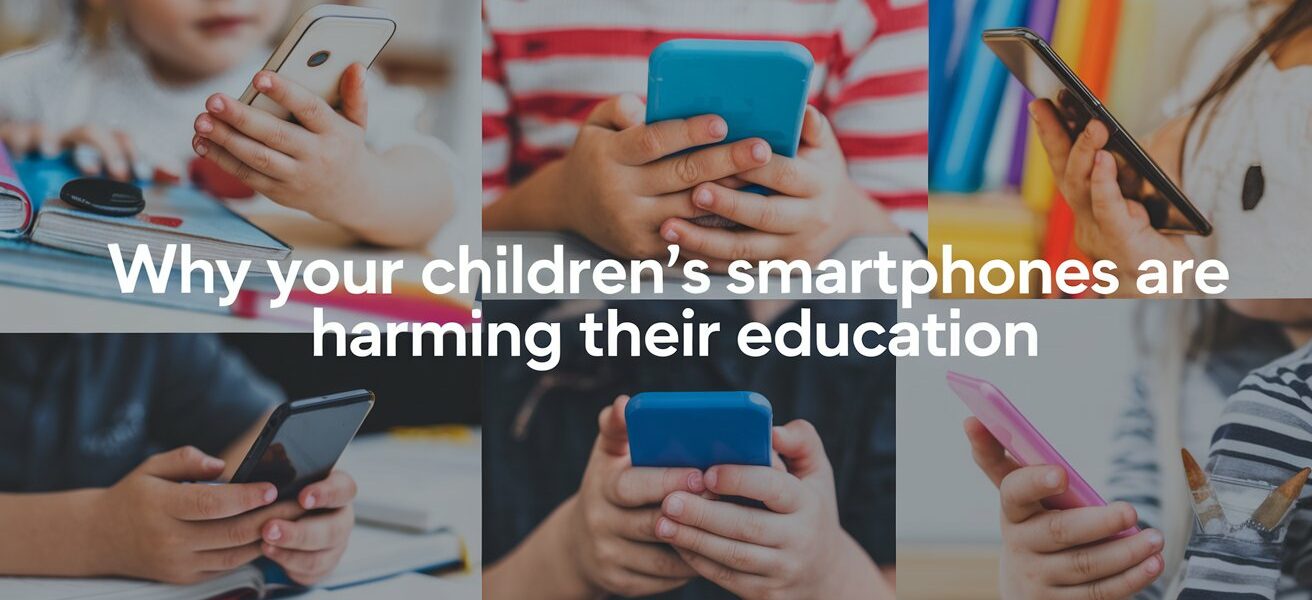Why Your Children’s Smartphones Are Harming Their Education
As children return to school, a growing number of institutions are implementing stricter policies regarding smartphones in the classroom. Many schools across the country are either banning phones altogether or significantly limiting their use, driven by concerns about their impact on learning and social interaction. According to the National Center for Education Statistics, most schools already prohibit nonacademic use of phones, and recent legislative efforts have aimed to expand these restrictions.
Parents often question these policies, particularly in the context of emergencies, such as school shootings, where they feel a strong need to stay connected with their children. However, research increasingly suggests that keeping phones out of the classroom — and ideally out of schools entirely — is not just beneficial but necessary for children’s development and academic success.
The Growing Problem of Smartphones in Schools
A 2023 study by Common Sense Media revealed that 97% of 11- to 17-year-olds use their phones during school hours, averaging about 43 minutes of screen time daily. While some of this usage occurs during breaks, such as between classes, lunch, or recess, it’s often at the expense of meaningful social interactions. Instead of engaging with peers, many students are preoccupied with what’s happening on their screens.
Social psychologist Jonathan Haidt, in his work “The Anxious Generation: How the Great Rewiring of Childhood is Causing an Epidemic of Mental Illness,” argues that this preoccupation with smartphones is detrimental to children’s social and emotional development. He emphasizes that one of the most critical activities for young people is playing and interacting with their peers. Through these interactions, they learn to navigate social dynamics, build problem-solving skills, and develop resilience — all of which are essential for their overall well-being.
Distraction in the Classroom
The impact of smartphones isn’t confined to social settings; they are a significant distraction in the classroom as well. A June survey by the Pew Research Center found that 72% of public high school teachers view cell phone distractions as a major issue in their classrooms. The evidence is clear: when students are sneaking glances at their phones, they are not fully engaged in learning. The human brain simply cannot multitask effectively, meaning students cannot pay attention to both their lessons and their screens simultaneously.
One indicator of this distraction is the decline in academic performance. The ACT, a standardized test measuring readiness for college-level work, reported that scores in 2023 fell to their lowest level in over 30 years. This trend coincides with the rise of smartphone use among students, suggesting a link between increased phone use and decreased academic achievement.
As a professor with over a decade of teaching experience at various universities, I have observed this decline firsthand. Students who once demonstrated strong concentration and critical reading skills now struggle to maintain focus and engage deeply with course material. This shift has become more pronounced as smartphones have become more ubiquitous.
The Challenge of Restricting Smartphone Use
It’s easy to anticipate how students might react to being asked to leave their phones at home: many will promise not to use them during the school day. However, expecting them to resist the urge to check their phones is unrealistic. Smartphones are designed to be addictive, with features like endless scrolling and constant notifications that keep users hooked. The average teen receives 237 notifications a day, with about a quarter of these coming during school hours, according to the Common Sense Media study.
Banning smartphones in schools could force students to develop the ability to concentrate on their immediate surroundings — an increasingly rare skill in today’s digital age. Haidt warns that a “phone-based life” can hinder individuals from being fully present with others or at peace when alone, both of which are crucial for healthy social and emotional functioning.
The Myth of Smartphone Safety
One of the most common arguments for allowing smartphones in schools is safety. Many parents believe that having a phone makes their child safer, particularly in emergency situations. However, this perception may be misguided.
Smartphones can actually pose safety risks. For example, at a recent talk I gave at a private school, the school psychologist highlighted how students frequently exit the school while glued to their screens, oblivious to their surroundings as they cross busy streets. In such cases, smartphones could cause emergencies rather than prevent them.
Moreover, in an actual crisis, such as a school shooting, children might be safer if they focus on following instructions from authorities rather than on their phones. In many emergency scenarios, maintaining silence and staying alert to the immediate situation can be more critical than trying to communicate with parents.
Additionally, the risks associated with smartphone use extend beyond physical safety. A report by Thorn, a nonprofit organization dedicated to preventing child sexual abuse, found that 59% of young people have encountered potentially harmful online experiences. Disturbingly, one in three minors and one in five preteens reported having online sexual experiences with someone they believed to be an adult.
Alternatives and Solutions
While banning smartphones from schools might complicate logistics, such as coordinating pickups after extracurricular activities, there are alternatives. For instance, if a child needs a phone for medical reasons or to communicate with parents due to complex scheduling, an old-fashioned flip phone could be a solution. These devices allow for calls and texts but lack access to social media and other distractions.
Ultimately, sending children to school without smartphones may be one of the best ways to support their education and development. Without the constant pull of notifications and social media, students can focus on learning, interacting with their peers, and being fully present in their environments.
In a world increasingly dominated by screens, teaching children the value of presence, concentration, and real-world interaction is more important than ever. By limiting smartphone use in schools, we can help ensure that the next generation grows up smarter, more resilient, and better equipped to handle the challenges of the future.
4o





